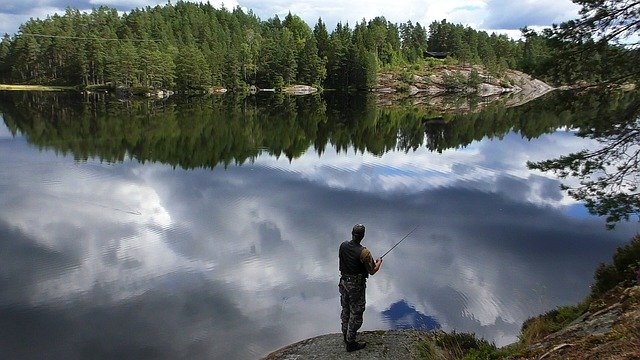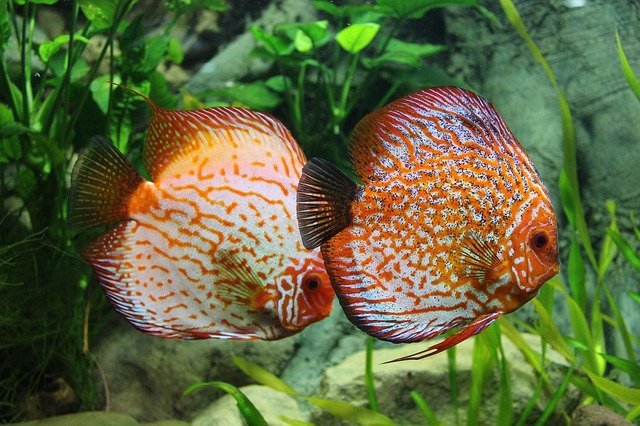While most people know that fish is a nutritious addition to one’s diet, few people have the skill and knowledge needed to catch fresh fish. If you want to learn how to become successful or more successful with fishing then use the expert advice available from this article in order to do so.
Be extra careful when you wade through the water. Standing still is ideal, as you won’t make much noise, but if you need to move from one place to another, walk slowly so as to avoid splashing. Too much noise will scare fish away. Don’t disturb anything and don’t hurry.
Look for a spot where fish are congregating, and then cast your hook in a place upstream from that area. By casting upstream from the location you want to fish, your bait will float down past the fish. The natural motion caused by the drift helps attract the fish to the bait. This method is especially helpful when the fish is in an area with debris or obstructions.
Sharp Hook
No other single piece of equipment is as important as a sharp hook when it comes to fishing. Without a sharp hook, your prey is not likely to remain on your line as you reel it in. Dull hooks are useless. Sharpen or replace your hooks regularly.
A quick look at the condition of your hooks is called for if you start to lose fish from a lure that has been reliable in the past. Frequent use will make hooks to become blunt or even twisted. Many fishers forget this, even though it can reduce results dramatically. The best way to solve this problem is by replacing the old hooks with new ones.
It is good form to release any fish you’ve caught that aren’t worth keeping. For example, small fish should be released, and catching a lot of fish means you should put some back, as well. By controlling the number of fish that is removed, fishermen are ensuring an abundance of fish will be available for future generations.
Lots of bass fishermen use light-colored grubs. Grubs in white, smoke-colored, chartreuse and yellow are very effective. Translucent grubs, which contain metal flecks, reflect light and increase your chances of success. You can also try using a grub that is colored similarly to the water in order to catch more fish.
Knowing what you’re doing is the only way for a beginner to succeed. Learning the correct casting procedures, how to spot good fishing spots, and choosing the best lure for the water will help ensure success. There are countless fishing books on the market that teach the finer points of angling. Check the library. With this knowledge in hand, you’ll be able to catch lots of fish.
It is essential that anyone who fishes understands how to set the hook correctly. This step is especially important if you plan to use lures. A poorly-set hook puts you at risk of losing a fish after you have done all the hard work necessary to get it to bite.
If you are out deep sea fishing, you should look out for indications of fish close by. Many times you will notice floating wood or debris. More often than not, this is a tell tale sign that there is fish in the area. Seagulls feasting on smaller fish is also a sign that larger fish are looming nearby.

Take a camera with you to take pictures of fish you catch and release so people will believe you when they ask you about your fishing accomplishments. The fish will live and now you a long-lasting photo to show everyone.
Spinnerbaits are great entry level lures that anyone can use. These particular lures are especially good for fishing shady areas, or murky waters. The fish most associated with spinnerbait is the bass, but crappie will bite on it too.
Prior to going fishing, check the weather. Always check the weather as you never know when it could spoil your fishing day. Things could turn dangerous if an unexpected storm pops up. Watch the weather report on TV, check it on the Internet or on your cell phone before you leave.
If your fishing spot is full of plants, fishing can become an irritating experience. Although these obstructions can be annoying and potentially snag your line, they are the best places to fish because the insects they feed upon are usually around this vegetation.
The type of rod you fish with will help a great deal, so be sure to have quality equipment. The lower quality rods will break under pressure and are not as well tested as the higher quality ones. A quality rod might seem like a bigger investment now, but it’s actually a lot cheaper than continuously buying bottom-rung rods that need to be replaced every month.
Keep cool when you hook a big fish. Of course, it will try to escape! That’s to be expected. Avoid reeling in a fish while it is actively swimming away. Do your best to relax and let your rod and the drag do the work. Set your drag only once your hook is fully set in your fish. Try to maintain a 45 degree angle and the tip of your rod should be pointed in the direction of the fish.
Try different methods of casting as a means of casting your lure with the least amount of splash and noise. If your lure makes a loud noise when it hits the surface of the water, it will actually scare fish away, rather than attract them. Use the wrist while casting for a more silent cast.
If you’re fighting a fish, notice its movements. The fish will roll on its side as its jumps become less energetic. This tells you the fish is tiring, and that you can begin reeling it in. Wait until you observe the fish rolling over on its side, and then begin to bring it in.
Fishing is something that should be enjoyed by everyone, and you can with the advice that was featured here. Learn what you can and reap the benefits of knowing.
If you engage in a fight with a fish, make sure you pay close attention to the way it moves. The jumping should slow until your fish falls over to one side. This decreased movement indicates that your catch is becoming tired, making it the ideal time to begin reeling it in. When the fish rolls over on its side, it is time to begin pulling on the line.

